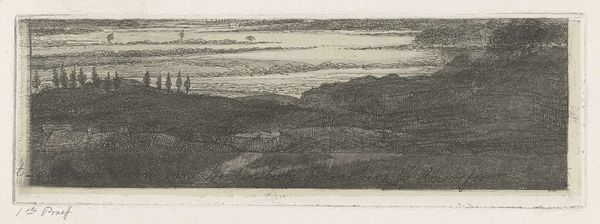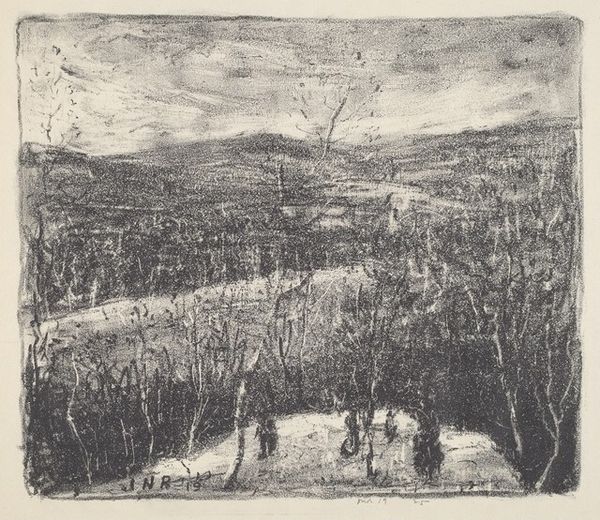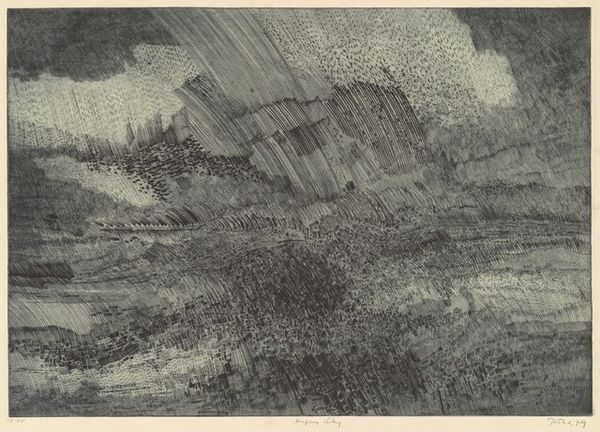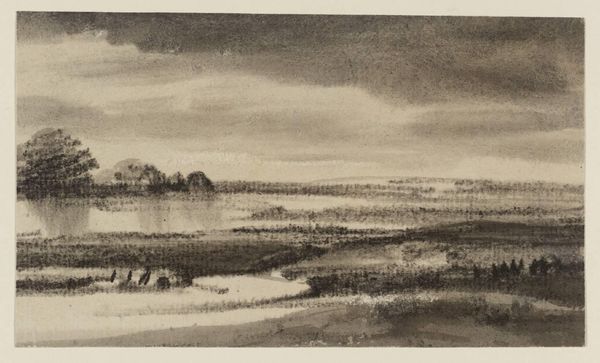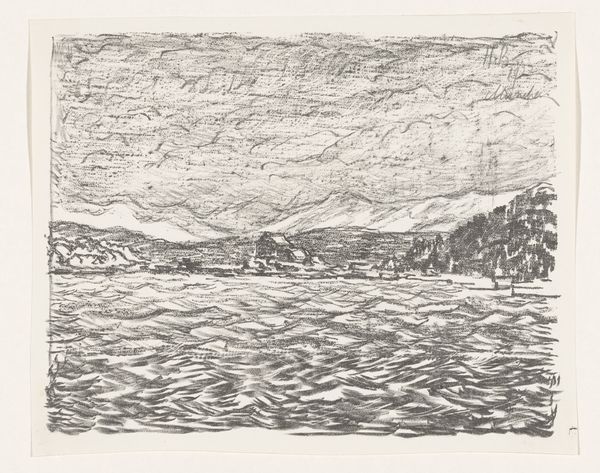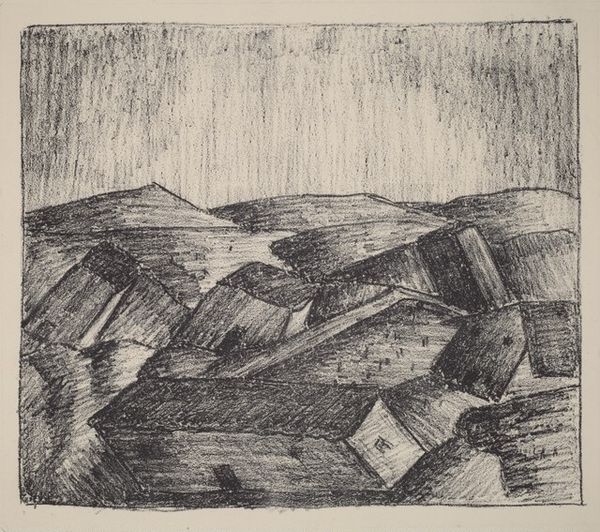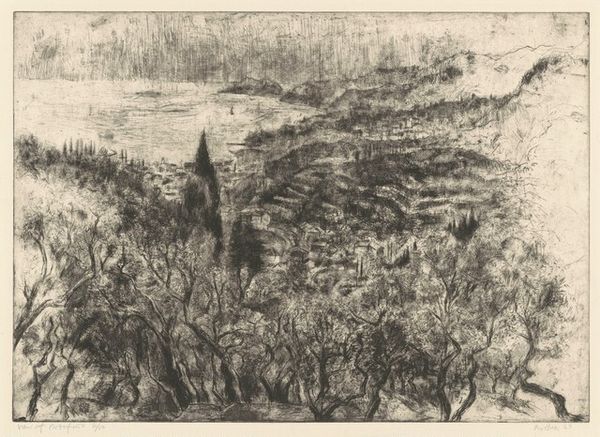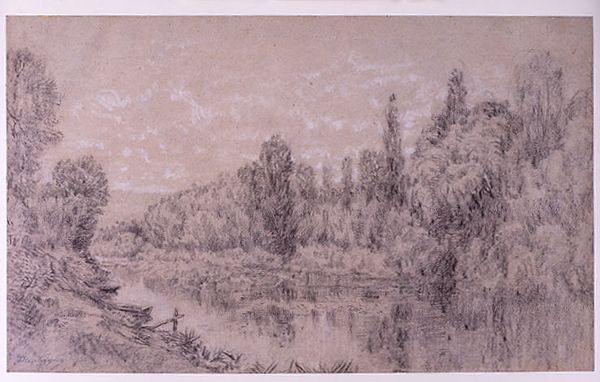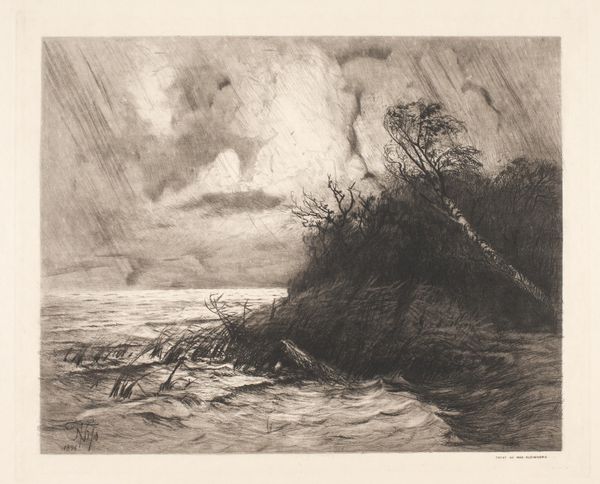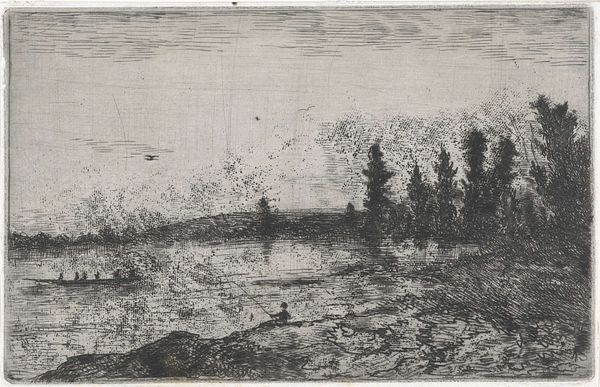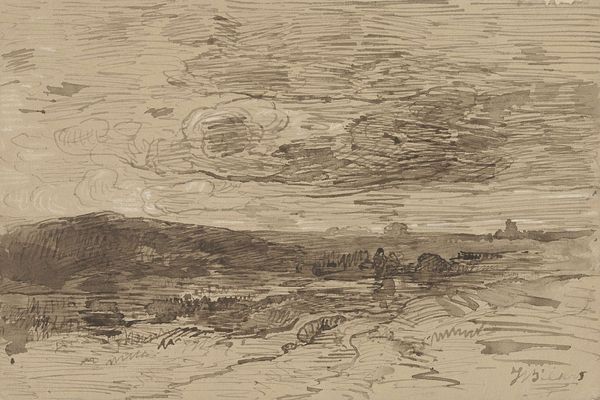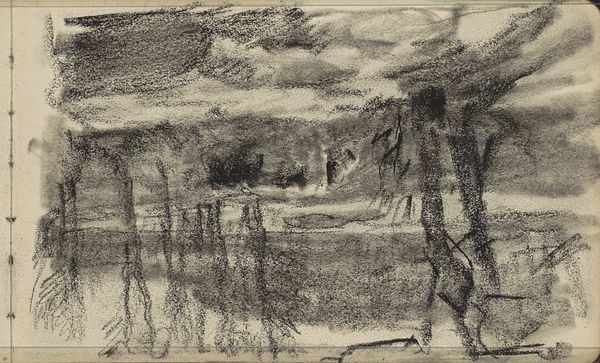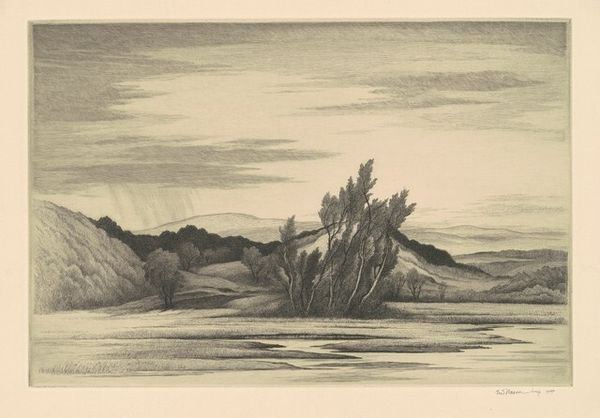
print, etching
# print
#
etching
#
landscape
#
realism
Copyright: National Gallery of Art: CC0 1.0
Editor: This is James N. Rosenberg's etching, "Field in Sunlight," created in 1919. It has a somewhat somber quality to it despite the title. I’m intrigued by the contrast between the subject matter, a sunlit field, and the heavy lines of the etching. What catches your eye in this piece? Curator: The striking element here is Rosenberg’s engagement with the physicality of the etching process. Observe how the labor-intensive act of carving into the plate and the printing process itself becomes a focal point. This method makes us consider not just the depiction of a landscape, but the artist's hand, the tools used, and ultimately the system of art production that makes such an image possible. How do you think the material affects our interpretation of the subject matter? Editor: It definitely shifts the perception. Instead of a tranquil, idyllic field, there's a sense of effort and perhaps even hardship. It makes me wonder about Rosenberg's own experiences at the time. Were etchings common at the time for landscape depictions? Curator: The accessibility of printmaking allowed for wider distribution, which made art more accessible and created a bigger market. Also, consider how the realism style fits within the cultural landscape of 1919, the period of post-war reconstruction and industrial growth. Do you see a reflection of this tension in this etching, given its seeming ambivalence towards ‘sunlight’? Editor: That's fascinating! I hadn't considered the societal context so explicitly. It changes my interpretation of the piece. Curator: By focusing on the process and materials, we unearth layers of meaning that might otherwise remain hidden. This is how art pushes beyond being simply representational and instead acts as a material record of production and cultural circumstances. Editor: I agree! Seeing how the etching process informs the emotional and social content really enriches my understanding. Thanks for showing me the importance of looking at the "how" and the "why" beyond the "what."
Comments
No comments
Be the first to comment and join the conversation on the ultimate creative platform.
